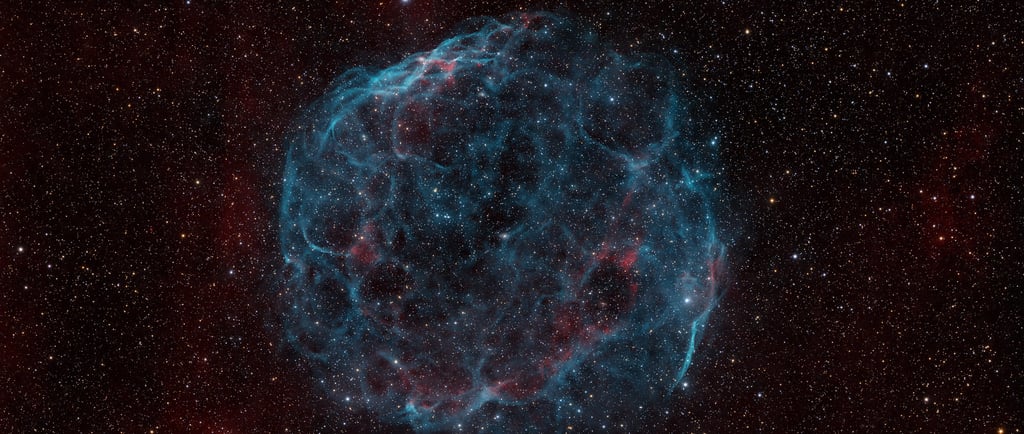The Supernova Remnant SNR G179.0+2.6 in Auriga


Introduction to SNR G179.0+2.6
The supernova remnant (SNR) G179.0+2.6, nestled in the constellation Auriga, has captivated the interest of astronomers and astrophysicists alike. This ancient remnant is a fascinating subject for study due to its unique characteristics and the information it can provide about the universe. Particularly, the emissions of OIII (doubly ionized oxygen) from this remnant highlight its significance in cosmic evolution and the life cycle of stars.
Scientific Importance of OIII Emissions
OIII emissions play a crucial role in understanding the physical conditions within supernova remnants. In SNR G179.0+2.6, these emissions indicate ongoing processes that reveal how the remnant interacts with the surrounding interstellar medium. Observations have shown that the intensity of OIII emissions is a reflection of the temperatures and densities present within the remnant’s gas cloud. This information is essential for comprehending the chemical enrichment of the Milky Way as remnants like G179.0+2.6 disperse newly formed elements into the cosmos.
Current Research and Observations
Recent studies utilizing advanced telescopes have provided deeper insights into SNR G179.0+2.6. Astronomers have employed spectroscopic methods to analyze OIII emissions, which allows for the extraction of crucial data regarding the expansion velocity of the remnant and its energy dynamics. By observing these emissions in different wavelengths, researchers can also locate shockwaves generated by the supernova explosion, further enriching our understanding of its structure and evolution.
The study of SNR G179.0+2.6 is not just about documenting its current state; it also involves reconstructing its past. By understanding the conditions that led to the star’s explosion and subsequent formation of the remnant, scientists can draw larger conclusions about the life cycles of similar stars in the universe. This ongoing research not only enhances our knowledge of SNRs but also sheds light on the nature of supernovae and their catalytic role in galactic evolution.
In conclusion, the supernova remnant SNR G179.0+2.6, located within the constellation Auriga, continues to be an invaluable resource for astronomers. Its OIII emissions provide key insights into the composition and development of both the remnant and the surrounding cosmic environment. Future observations and research endeavors promise to unlock even more secrets about this enigmatic remnant and its place in the universe.
